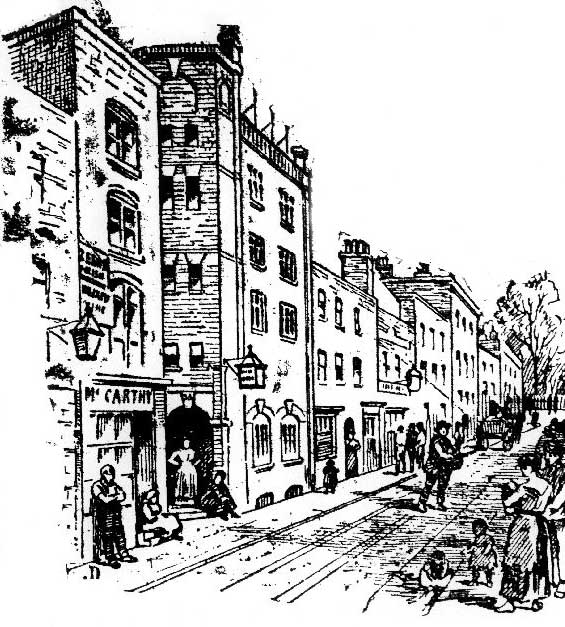In 1936, the artist and Punch cartoonist Starr Wood (1870 – 1944) published his memoir, which was titled, “My Life Of Laughter.”
Starr Wood was born in London on the 1st of February 1870, and was the son of a customs officer.
In 1887, the year before the Whitechapel murders, he went to work at a Chartered Accountant’s office, where one of his tasks was the collecting of debts.
In this capacity he had to carry around with him a black bag, and artefact which, as it happened led him to be mistaken for the perpetrator of the East End crimes, who, by November, 1888, was indelibly linked in the public consciousness with just such a black bag!
Although he didn’t name the street in which the unfortunate incident occurred, and, of course, assuming the story is true – since many writers would later claim that they had, at one time or another, been mistaken for the murderer – I presume that the street in question was Dorset Street, scene of the murder of Mary Kelly.

MISTAKEN FOR THE RIPPER
The Weekly Dispatch took up the story of the case of mistaken identity in its edition of Sunday, 28th June, 1936:-
“It is not often the lot of even a debt collector to be mistaken for a notorious murderer, and to then be pursued through the streets of London by a howling mob.
Yet, such was my experience.
A MEAN STREET IN EAST LONDON
I was once making a call in a mean street, and down at the very end I saw a huge crowd that was gathered outside a house.
Boy-like I went down to see what was the cause of the commotion. But, as I approached with a question ready on my lips, somebody shouted loudly, “There he is. there he is, get him!”
Immediately, a big section of the crowd swung around and, after a preliminary look, made a dash for me.
A RECORD BREAKING RUN
Though puzzled by their sudden dislike, I did not pause for polite remonstrances, but gave my long legs free rein.
I do not know what the record time is for a sprint from Spitalfields to Shoreditch Station, but it can never equal the unofficial record set up by me that day. I shot through the station like a rabbit, and did not pause for breath until I had hidden myself safely in a cloakroom.
Outside, my disappointed pursuers waited for a while and then dispersed.
THEY THOUGHT HE WAS THE MURDERER
Only later did I learn that their anxiety to interview me was due to their having mistaken me for Jack the Ripper, whose reign of terror was then at its height.
He was reputed to carry a small black bag – one that was just like my debt-collector’s bag – for the knives and razors with which he mutilated his victims.
And that day another murdered woman had been found in the house outside which I had seen the crowd.
HE WAS NEVER CAUGHT
Jack the Ripper, of course, was never caught.
For a time after my experience he kept on doing his ghastly crimes right under the noses of the police and in thickly populated districts.
His victims were always women of the unfortunate class, against whom, it was believed, he had some personal or family grudge.
Sometimes he actually gave notice in advance of his intention to commit another murder, but, in spite of this and in spite of the keenest police work, he was never even identified.
HE BECAME AN ARTIST
I do not know whether the perpetual carrying of a black bag – at such a risk – got on my nerves, or whether I realised that I had not in me the stuff of which financial wizards are made, but it was at about this time that I decided that a business career had no further charm for me.”
